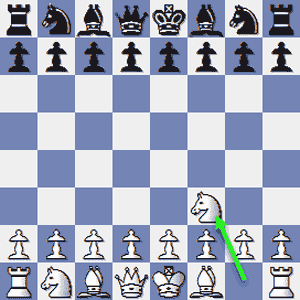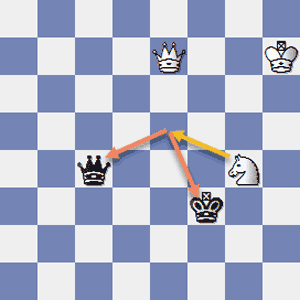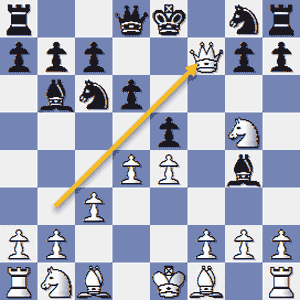Learn The Knight Moves For Chess
They are instrumental pieces in the opening and throughout the game. Correct deployment of the minor pieces is crucial in gaining a positional edge over your opponent.
Before going over the Bishop we will first look at the Knight. Knights before Bishops is something you'll hear loud and often as you study chess strategy.
Initial Setup
Knight Moves: Each side starts with two Knights placed on the back row on the square next to the corner
They co-ordinate well with their partners in crime, the Bishops. The Knights and the Bishops are posted to nice squares early on where they can support the center and threaten the enemy.
Each piece has different primary and secondary objectives as the game moves from one phase to another. One of the great arguments in chess is the age old dilemma, which is better, the Bishop or the Knight? In the opening the Knight's main objectives are to get developed and to support the pawn's attempt to win the center.
Horses Can Jump

Knight Moves: 1.Nf3 - The Knights can leap over pawns or pieces
The Knight can wade through densely populated areas of the board through the use of this phenomenon. Take a look at the diagram. The other back row pieces must wait for some pawns to move in order to escape the back rank into battle.
But as you can see the four Knights can reach the third rank straight away by simply jumping over the pawns. They do not have to wait for them to move. Cool!
Unsheathe the Deadly Knight Fork

White can fork Black's King and Queen with 43.Ne5+, the Knight is famous for it's forking ability
The opponent is forced to save the more powerful or maybe rather more important piece leaving the other hanging and this second hanging piece is captured.
If the King is one of the two pieces attacked in the fork, clearly he is the one that must be saved. That leaves the other one open for capture.
In the diagram, if 43.Ne5+is played, the Black King is in check and the Black Queen is also under attack. The King must move, the Queen is lost and there is nothing Black can do about it.
The Queen's Greatest Ally

Queen and Knight team up to deliver checkmate
The reason Capablanca gave for this is quite a logical one. As he said while the Bishop can only mimic the Queen with it's movement, the unique Knight move allows him access to places that the Queen cannot cover so together they are the deadlier combination.
The diagram shows a check-mate achieved by a Queen with the support of her Kingside Knight. This will hopefully give you an idea of what you are trying to achieve.
Moving On
But we'll get to that in time. For the moment just smile and be content in the knowledge that you can now move the Knight. And if per chance you are having even the slightest trouble with it fear not. I have something here that will have you seeing the Knight moving even while you sleep!
Even if you're completely comfortable with the Knight's move at this stage I say take a look at this. It's the solution to a super little chess puzzle. It's a little thing called the Knight's Tour.






